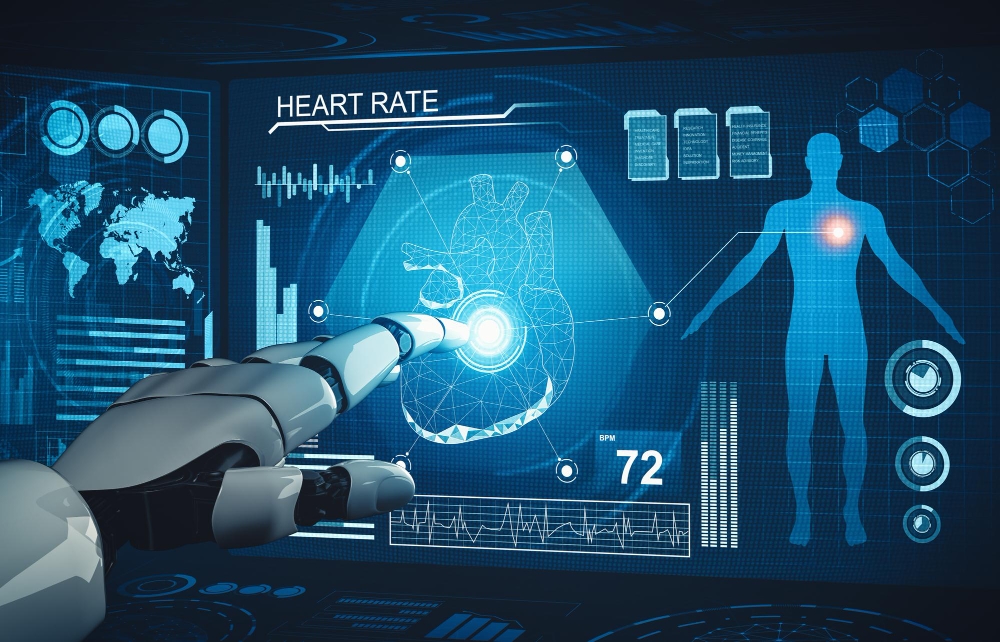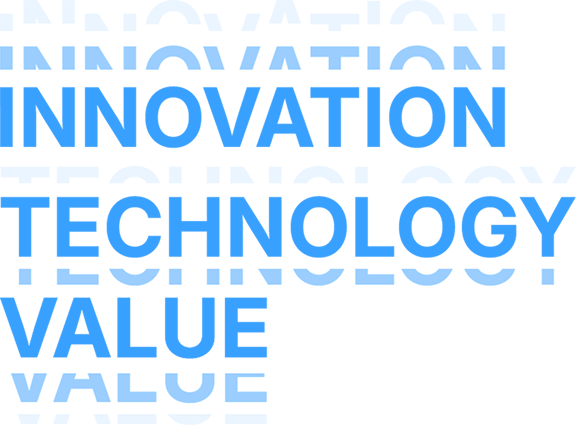Healthcare is complex. It’s driven by data, but burdened by inefficiencies. Clinicians and administrators alike are navigating a daily maze of paperwork, legacy systems, and delayed decisions, all while trying to deliver quality patient care. AI cuts through that complexity.
More than just automation, AI provides actionable intelligence, helping teams detect disease earlier, manage patient risk more accurately, and handle back-end operations with unprecedented speed and accuracy. It’s not science fiction. It’s already happening in hospitals, labs, and clinics around the world.
This blog breaks down six powerful, high-impact AI use cases in healthcare that are helping organizations work smarter, not harder.
What is AI in Healthcare?
Artificial Intelligence (AI) in healthcare refers to the use of advanced computational technologies, including machine learning, natural language processing (NLP), computer vision, and, more recently, generative AI, to analyze complex medical data, automate processes, and assist in clinical decision-making. The goal isn’t to replace healthcare professionals, but to augment their capabilities, reduce operational inefficiencies, and improve patient outcomes.
Healthcare is one of the most data-rich yet operationally strained industries in the world. Every clinical interaction, diagnostic image, lab test, and patient history adds to an enormous pool of information. Traditionally, this data has been underutilized due to its volume, complexity, and fragmentation across disparate systems. AI is changing that.
Why AI in Healthcare is Critical Now
Several global trends have converged to make this a pivotal moment for AI adoption in healthcare:
- Data Explosion: Modern healthcare systems generate petabytes of structured and unstructured data, from EHRs and imaging to genomics and wearable device readings. AI thrives in this environment, capable of synthesizing insights from diverse, messy data sets.
- Workforce Challenges: Chronic shortages of clinicians and administrative overload are straining care delivery. AI tools can alleviate some of this pressure by automating repetitive, non-clinical tasks and supporting clinical decision-making.
- Advancements in AI Models: Breakthroughs in large language models (LLMs) and multimodal AI now allow machines to interpret complex clinical language, radiology images, and even genomics data with increasing accuracy.
- Regulatory Momentum: Frameworks like the EU AI Act and updates to HIPAA and GDPR are providing clearer guardrails for responsible AI use in clinical environments.
Shift to Value-Based Care: As healthcare systems worldwide move from volume to value, AI enables more proactive, personalized, and efficient care models.
Top 6 AI Use Cases in Healthcare
AI in Medical Imaging and Diagnostics
One of the earliest and most validated AI use cases in healthcare is in medical imaging. AI models, particularly those using deep learning, can analyze medical images like X-rays, CT scans, and MRIs with high accuracy. These models detect anomalies such as tumors, fractures, or infections, often at earlier stages than human radiologists can.

For example, deep learning systems have demonstrated superior performance in identifying early-stage lung cancer in CT scans. These AI tools can highlight subtle nodules and patterns that may be missed by the human eye, especially in high-volume settings where radiologists face fatigue and time constraints.
Business Value Delivered:
- Reduce diagnostic time by 30–50%, speeding up clinical workflows.
- Increase diagnostic accuracy, leading to earlier interventions and better outcomes.
- Alleviate radiologist workload, reducing burnout and improving retention.
AI doesn’t replace specialists; it enhances their capacity and effectiveness. As adoption grows, diagnostic departments are experiencing lower error rates and improved patient throughput.
Predictive Analytics for Preventive Care
Instead of waiting for symptoms to appear or worsen, predictive analytics uses AI to anticipate adverse events before they happen. By analyzing historical electronic health record (EHR) data, lab results, vital signs, and even social determinants of health, AI can flag high-risk patients for intervention.

One powerful application is in predicting hospital readmissions. AI systems trained on thousands of patient journeys can assess in real-time whether a recently discharged patient is likely to return within 30 days, and suggest targeted follow-ups. Predictive models have also proven effective in identifying patients at risk of developing sepsis or heart failure, allowing clinicians to administer preemptive treatment.
Business Value Delivered:
- Preventable admissions reduced by 12–20% annually.
- Improves care coordination, especially for chronic disease management.
- Saves hospitals millions in penalties and costs related to readmission.
Predictive analytics marks a shift from reactive to proactive medicine, delivering care that is not just better, but also more sustainable and cost-efficient.
AI for Drug Discovery and Development
The traditional drug development pipeline is long, expensive, and fraught with risk. AI is radically shortening that timeline by simulating how potential drug compounds interact with biological systems, predicting efficacy, and identifying side effects much earlier in the process.

AI models have been used to identify lead drug candidates in a matter of weeks, compressing years of trial-and-error into months. These tools can mine massive databases of biomedical literature, patient records, and genomic data to uncover hidden correlations and suggest new molecules with therapeutic potential.
Business Value Delivered:
- Shortens R&D timelines from 10–15 years to under 5 in some cases.
- Reduces the cost of drug development by hundreds of millions per compound.
- Increases the chance of clinical success by better preclinical targeting.
This acceleration isn’t just beneficial for pharmaceutical companies — it means patients gain faster access to life-saving therapies.
Personalized Treatment and Precision Medicine
Every patient is different, and AI allows medicine to finally treat them that way. By analyzing large datasets including genomics, lifestyle information, and treatment history, AI models can help clinicians tailor therapies for individuals rather than relying on one-size-fits-all protocols.
In oncology, for example, AI tools analyze tumor DNA and recommend targeted treatments most likely to work for a specific cancer mutation. In chronic disease care, AI systems adjust medication plans based on a patient’s physiological response patterns. Mental health platforms also use AI to customize intervention frequency and content based on behavioral data.
Business Value Delivered:
- Reduces adverse drug reactions and improves treatment adherence.
- Cuts trial-and-error in therapy selection, saving time and resources.
- Enhances patient satisfaction and health outcomes through more relevant care.
AI-powered personalization moves us toward more humane, effective care — one where patients feel seen, understood, and supported.
Conversational AI and Patient Engagement
Conversational AI, in the form of chatbots, voice assistants, and messaging platforms, is enhancing patient access and engagement across the care journey. These tools can answer medical FAQs, triage symptoms, book appointments, provide medication reminders, and explain discharge instructions.
This is especially valuable for overburdened systems, where administrative and basic clinical inquiries can delay care. Patients using AI assistants report better understanding of their care plans and improved compliance with follow-ups.
Business Value Delivered:
- Cuts patient support costs by 25–35%.
- Reduces no-shows and improves appointment utilization.
- Increases treatment adherence and continuity of care.
By offering 24/7 availability and personalized responses, AI interfaces ensure patients feel informed and cared for, even outside the clinic.
AI in Healthcare Administration and Operations
While much of the focus is on clinical AI, enormous efficiency gains are being made in the administrative backbone of healthcare. AI tools can automate tasks like claim processing, coding, scheduling, documentation, and inventory management.

Natural Language Processing (NLP) helps transcribe and summarize doctor-patient conversations in real-time, freeing clinicians from hours of paperwork. Robotic Process Automation (RPA) handles repetitive workflows, such as insurance pre-authorizations and billing review.
Business Value Delivered:
- Improves billing accuracy by up to 40%.
- Reduces administrative time by 30–50% for providers.
- Speeds up revenue cycle, improving financial performance.
When healthcare staff spend less time on paperwork and more time with patients, both operational efficiency and care quality rise.
Key Challenges to Keep in Mind
Despite the extraordinary promise of AI use cases in healthcare, the path to successful adoption is far from frictionless. Organizations must navigate a range of technical, ethical, and operational hurdles, not just to deploy AI, but to deploy it responsibly and sustainably.
Data Privacy & Regulatory Compliance
AI models often require large, high-quality datasets for training, but aggregating this data across institutions raises privacy risks and consent complexities. Moreover, anonymization isn’t always sufficient, especially with advanced re-identification techniques.
Strategic response:
Organizations are increasingly turning to privacy-preserving techniques such as:
- Federated learning, which trains AI models on decentralized data sources without moving raw data
- Synthetic data generation, which creates statistically valid but non-identifiable data for model development
- Data governance frameworks to manage access and auditability
Bias and Fairness in Algorithms
AI models are only as good as the data they’re trained on. If that data lacks diversity, demographically, geographically, or clinically, the resulting predictions may reinforce or even exacerbate healthcare disparities.
Strategic response:
- Regular bias audits and model validation across diverse subpopulations
- Incorporating social determinants of health (SDoH) into model design
- Working with interdisciplinary teams (clinicians + ethicists + technologists) during development
Lack of Explainability and Clinical Trust
Healthcare is a high-stakes environment. Doctors, nurses, and administrators cannot rely on opaque “black-box” algorithms, especially when AI recommendations influence diagnosis, treatment, or triage decisions.
Strategic response:
- Investing in Explainable AI (XAI) tools that surface reasoning behind predictions (e.g., heatmaps for radiology images, decision trees for risk scores)
- Prioritizing human-in-the-loop systems where AI acts as an assistant, not a replacement
- Ensuring transparency in model training, data lineage, and performance metrics
Integration with Legacy Systems and Clinical Workflows
Most healthcare institutions rely on a patchwork of legacy EHR systems, siloed data warehouses, and manual workflows. Plugging an AI model into this environment is often far more complex than it seems.
Strategic response:
- Focus on workflow-first design: AI must adapt to the clinical environment, not the other way around
- Use middleware and integration layers to connect AI models with existing EHRs securely
- Prioritize pilot programs with clinician feedback loops before full deployment
Let’s Build a Smarter, More Human Future for Healthcare
Healthcare is one of humanity’s greatest pursuits, and today, it’s standing at the edge of a transformation. Faster interventions, more accurate insights, a future where healthcare systems don’t just react to illness, but predict it, prevent it, and personalize treatment for every individual. At the core of this shift are powerful AI use cases in healthcare, systems that support diagnoses, streamline operations, and unlock entirely new possibilities for patients and providers alike.
Behind every life saved, every decision made, every step toward better care, there’s a system quietly working to support it. Contact VTI and let us be the ones who build that system for you.
![[FREE EBOOK] Strategic Vietnam IT Outsourcing: Optimizing Cost and Workforce Efficiency](https://vti.com.vn/wp-content/uploads/2023/08/cover-mockup_ebook-it-outsourcing-20230331111004-ynxdn-1.png)




